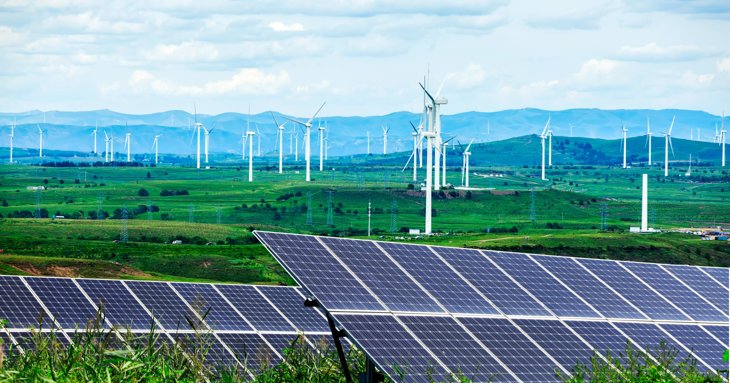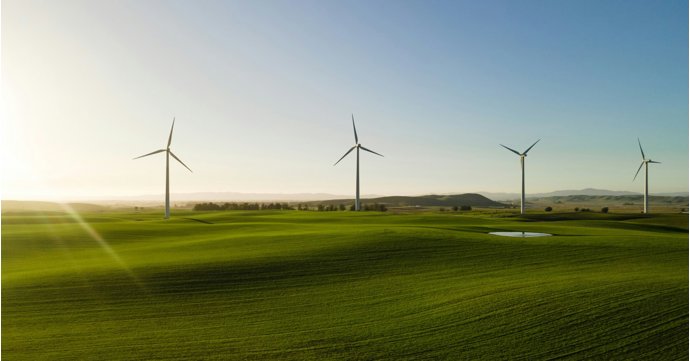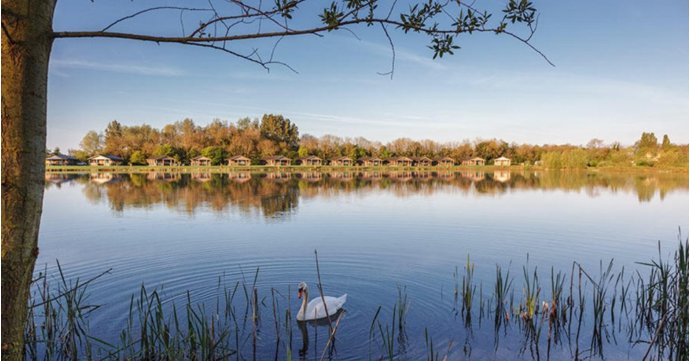Taking care of our environment has never been more important – and businesses large and small all have a responsibility to become more sustainable, especially with customers placing more value on green businesses.
With Gloucestershire aiming to become a carbon neutral county by 2050, SoGlos spoke to Ecotricity in Stroud about how businesses across the county and beyond can start to reduce their carbon footprint right now.
About the expert – Dr Gary Thomas, sustainability lead for the Green Britain Group
Dr Gary Thomas is the sustainability lead for the Green Britain Group – which includes renewable energy pioneers, Ecotricity and the ‘greenest football club in the world’, Forest Green Rovers.
Ecotricity, based in Stroud, is the world’s first green energy company and is working towards completely replacing fossil fuels with clean, renewable energy. Ecotricity doesn’t just sell green energy, it generates its own at wind and sun parks across the country, as well as actively investing customer’s bills into new green technology too.
Let’s start with the basics – what exactly is a carbon footprint?
Everything we do has an impact on the environment, consuming raw materials that have to be mined, grown or refined; burning energy; transporting stuff; creating waste.
A carbon footprint puts a number on the amount of greenhouse gases released as we do those things. In the UK alone we release over 400 million tonnes of greenhouse gases each year and it’s these that are driving climate change.
Which sectors tend to have the biggest carbon footprint?
In the UK, the transport sector is still responsible for nearly a third of our carbon dioxide emissions even with the huge reductions in travel that we saw last year due to Covid-19.
Energy generation still creates around a quarter of our emissions, even though that’s dropped from around 40 per cent over the past decade, as we’ve replaced dirty coal with cleaner renewables in our fuel mix.
Finally, there’s agriculture which accounts for nearly a fifth of global greenhouse gas emissions.
That’s why our businesses concentrate on helping people reduce their impacts in those three areas: energy, transport and food, along with supporting nature.
Who is usually responsible for reducing the carbon footprint of a business?
That varies widely, depending on the business. For smaller operations it might well fall to the owner. In other cases it’s often joined with a health and safety role or sits with the facilities team.
The important thing to remember is that to make change you need buy in across the whole business. Everyone has a part to play in becoming more sustainable, it’s not the job of one person. Think about the stuff you buy, how you manage your resources, what you throw away.
If a business is looking to prioritise reducing its carbon footprint, where’s the best place to start? Are there any simple switches businesses can make straight away?
The first thing is to get a good overview of your business. Sit down and map out everything coming in – raw materials, purchased goods, energy, water for example; what you’re doing to change things; and then what’s coming out the other end – finished products, waste material, dirty water, fuel emissions, and so on.
Once you’ve done that, you can look at identifying the areas with the greatest environmental impact. Those big hitters of energy and transport are very likely to appear high up on the list of any company and there are quick changes you can make.
If you’re not already on a tariff with a 100 per cent renewable energy supplier, then think about switching to one when your current energy contract ends. If you have commitments to report your carbon emissions publicly, such as through Streamlined Energy Carbon Reporting (SECR), simple actions like this can have a huge impact on your overall carbon footprint.
How can businesses make their workplaces more eco-friendly?
Once you’ve gone through that review of your business it’ll throw up lots of potential areas to look at. Talk to your suppliers about alternative products with lower impacts on the environment. If they don’t have any suggestions perhaps it’s time to look at what other suppliers can offer.
Before you blow your whole budget on a fancy new piece of kit, make sure you’ve looked at the quick wins: think about what time the heating comes on and goes off, can you cut back 30 minutes on each? That’d be around 150 hours a year you save for nothing.
If you’re an energy intensive business, consider installing energy monitors on different bits of kit to optimise performance. Grey water systems can help with cutting your water consumption.
Talk to staff, find out what changes they’d like to see – there might be things you’ve missed. Simply planting an outside area to help pollinators will also make the place look better and lift spirits.
Are there ways for businesses to generate their own electricity – using solar panels or wind turbines, for example?
Yes, of course. This will largely depend on your site, where it is, how big it is and so on. Solar is the obvious choice if you have a viable roof space that can hold the panels. The capex cost of solar has dropped considerably over the past few years, so even if you’ve looked at it before, it might be worth revisiting.
You can also look at battery storage alongside whichever generation source you choose. This is great for keeping your systems running overnight or utilising energy generated at weekends and out of hours.
What about employees? Are there any incentives employers can offer to encourage their staff to be more carbon conscious?
A lot of this thinking should come from within as part of awareness raising work. If you’re looking at saving energy then you need to engage with staff because they’re the ones leaving stuff on or turning thermostats up.
Think about how people get to work. It’s great to have a cycle to work scheme on offer but even better to have some facilities for people to park their bikes safely, change or shower once they arrive.
Set up a carpool scheme – these cut commuting emissions as well as saving folk money. You could offer car sharers additional spaces in the staff car park to encourage them.
Also think about the company pension scheme, could there be an ethical option there for staff?
Embed sustainability in your business, have an environmental policy on display to remind staff of what you’ve committed to. Talk to your waste contractor so that you can reduce waste and maximise recycling. Put dairy milk alternatives in the fridge and think of nature – green space is good for the mind as well as the environment.
Ecotricity is well-known across the UK for being a leading provider of green electricity. What benefits does Ecotricity offer to business customers?
Ecotricity is more than just another energy supplier, it works with customers to help them along on their sustainability journey.
It has a wealth of experience from being at the forefront of the green revolution and can offer renewable energy generation solutions alongside battery storage. Its smart grid technology enables energy demand to be intelligently balanced to help avoid peaks and troughs, improving the efficiency of your systems.
It doesn’t have shareholders either. Instead of paying dividends, it invests customers’ bills into building new forms of green energy – it’s working on two new solar farms and a green gas mill right now.




















